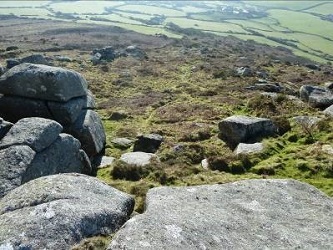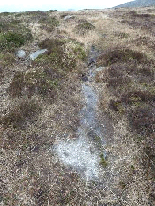Current ISIS code: F003
Previous assemblage name: F222 mature heath & dry scrub mosaic.
Linked assemblage: F221 montane and upland.
Description of habitat typically supporting the assemblage: The assemblage type is found on nutrient-poor, acid soils where herbaceous or dwarf shrub vegetation is dominant, although trees and taller shrubs can be an important component of the overall habitat.

Semi-natural systems supporting important examples of this assemblage type include mature areas of lowland heath, moorland and montane biotopes. It occurs on both damp and dry soils, but not when they are heavily fertilised. It is widespread in upland biotopes and is characteristic of some lowland biotopes including heath grassland and open woodland, which survive as islands of low ecological productivity in a sea of high input agricultural land.
It is the dominant assemblage on the Cornish West Penwith moors up to 250m.

This assemblage type is characterised by a wide range of invertebrates, but beetles and spiders make up particularly important components.
Potentially important environmental impacts
Nutrient enrichment through fertilisation / diffuse pollution. It can coexist with early successional assemblages in habitat matrices, but persists when grazing and active management of lowland heaths is discontinued leading to the disappearance of early successional assemblage types.
Sampling & assessing the assemblage
Standard sampling protocols apply
Target groups: Spiders, flies & beetles, flies, bees & wasps (lowland expression)
Fieldwork methods: Ground-searching sweep-netting, spot sweeping.
Alternative methods: Suction-sampling, pitfall trap grids.
Season: May-September
Target groups: Spiders, flies & beetles, flies, bees & wasps (upland expression)
Fieldwork methods: Spot-sweeping, ground-searching sweep-netting,
Alternative methods: Pitfall trap grids.
Season: May-September but shorter in upland areas.
The habitats are naturally species-poor and no major taxon is particularly well represented in comparison with grassland habitats. Spiders, homopteran bugs and moths are relatively important, although beetles & flies will dominate the catches. The recommended minimum groups for most survey aims are beetles, spiders and homopteran bugs.
Discrimination of conservation quality: good
Default target: 9 species
